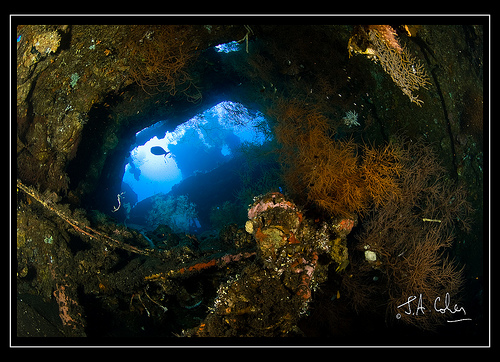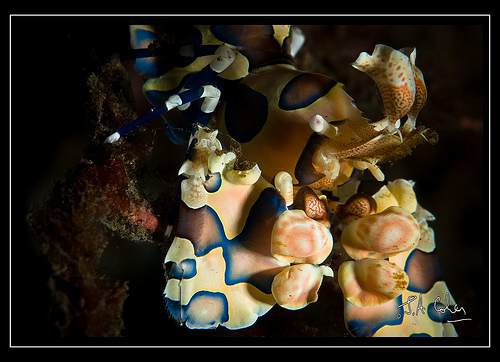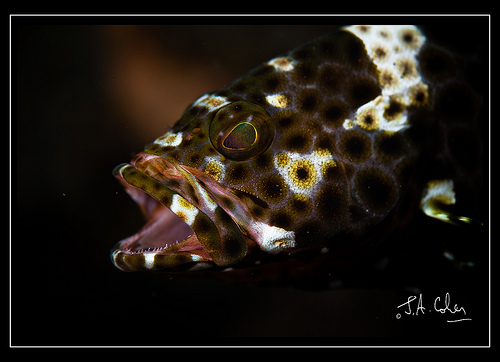Indonesia’s Banda Islands are historically famed for their spices, but they also possess some excellent scuba diving around the coast line of this tiny five island group.
We got four dives in at the Banda Islands after arriving there from Nusa Laut and before setting out the next day to head for the remote island of Manuk in the heart of the Banda Sea. There is a profusion of dive sites around Banda so this was a quick glimpse. Sorsongi and Banda Ai’s Tenjung Udang (Shrimp Point) were a good start to the day – the former a gentle slope with great viz and beautiful corals, the latter a coral encrusted wall. They provided a fascinating contrast to our third dive at the Lava Flow at the Banda island Gunung Api (not to be confused with Gunung Api, the island of the sea snakes, in the middle of the Banda Sea. Gunung Api means “fire mountain” in Bahasa Indonesia, and as such there are many volcanos across Indo with the same name).
Banda’s Gunung Api is still very much active, with the last eruption as recently as 1988. What’s remarkable about this black, volcanic site where you can see the tranches created by the lava flow – which is a pretty impressive monument in itself to the power of nature – is just how fast the coral have grown back here. You’d think that the lava would have wiped out all chance of life – but there is a flourishing, vast carpet of staghorn coral, plate corals and table corals now growing where the lava once flowed.
Bandanaira Jetty provided a superb environment for a gentle night dive, with frogfish and a cluster of juvenile sweetlips taking refuge amongst the jetty’s pylons. Like Ambon, this was another muck dive par excellence, and another great contrast to the day’s dives.
 The Banda Islands Above Water © Chris Mitchell
The Banda Islands Above Water © Chris Mitchell

Banda Islands coral © Chris Mitchell

Banda Islands coral © Chris Mitchell

Banda Islands coral © Chris Mitchell

Banda Islands coral © Chris Mitchell

Banda Islands coral © Chris Mitchell

Banda Islands coral © Chris Mitchell

Banda Islands coral © Chris Mitchell

This looks like something else… © Chris Mitchell
 Quite Amazing – A Bottle That’s Been Covered In Coral By Two Plate Corals © Chris Mitchell
Quite Amazing – A Bottle That’s Been Covered In Coral By Two Plate Corals © Chris Mitchell

Banda Islands coral © Chris Mitchell

Banda Islands coral © Chris Mitchell
 Juvenile Sweetlips at Bandaneira Jetty – they move so fast! © Chris Mitchell
Juvenile Sweetlips at Bandaneira Jetty – they move so fast! © Chris Mitchell























































